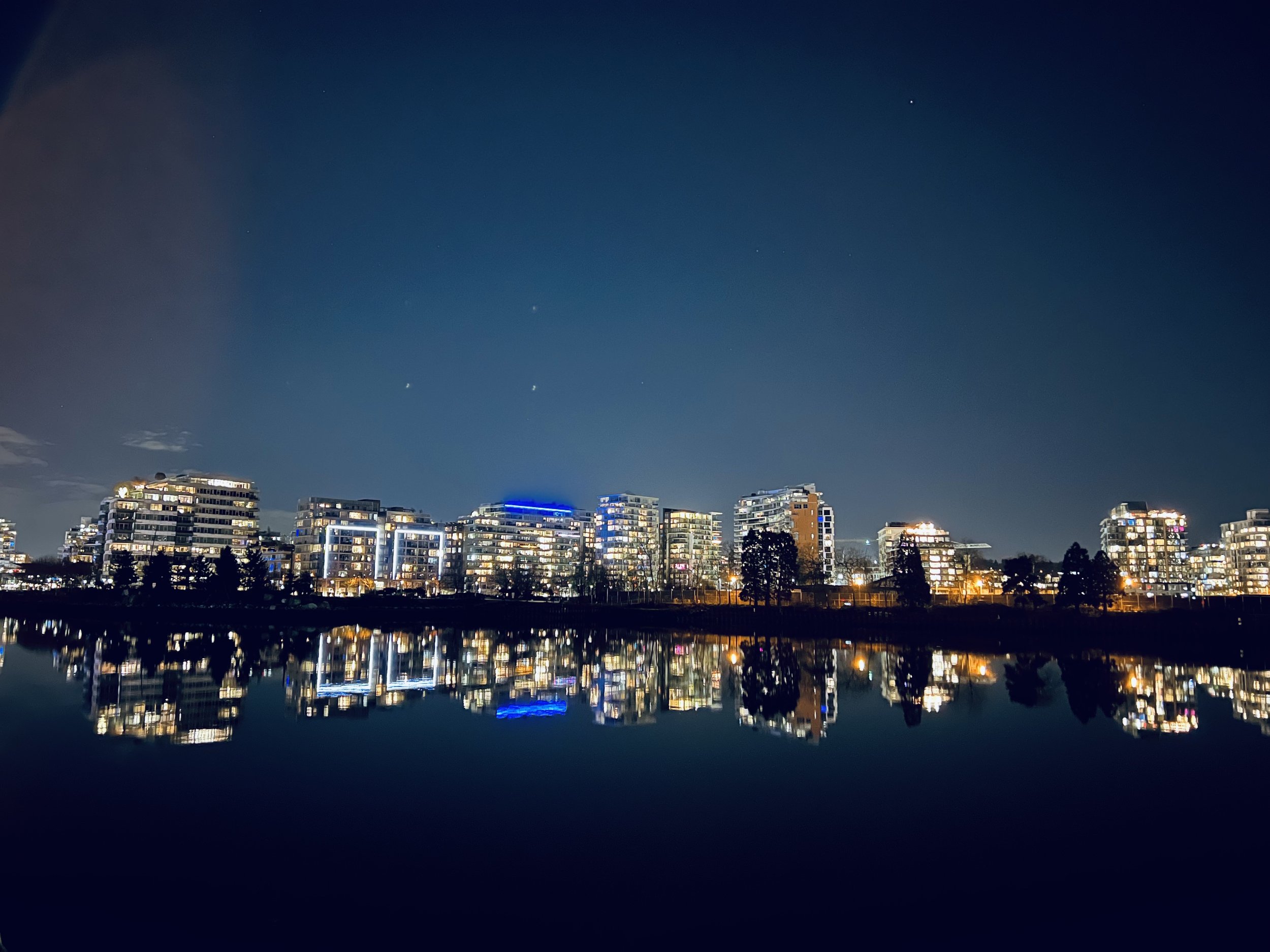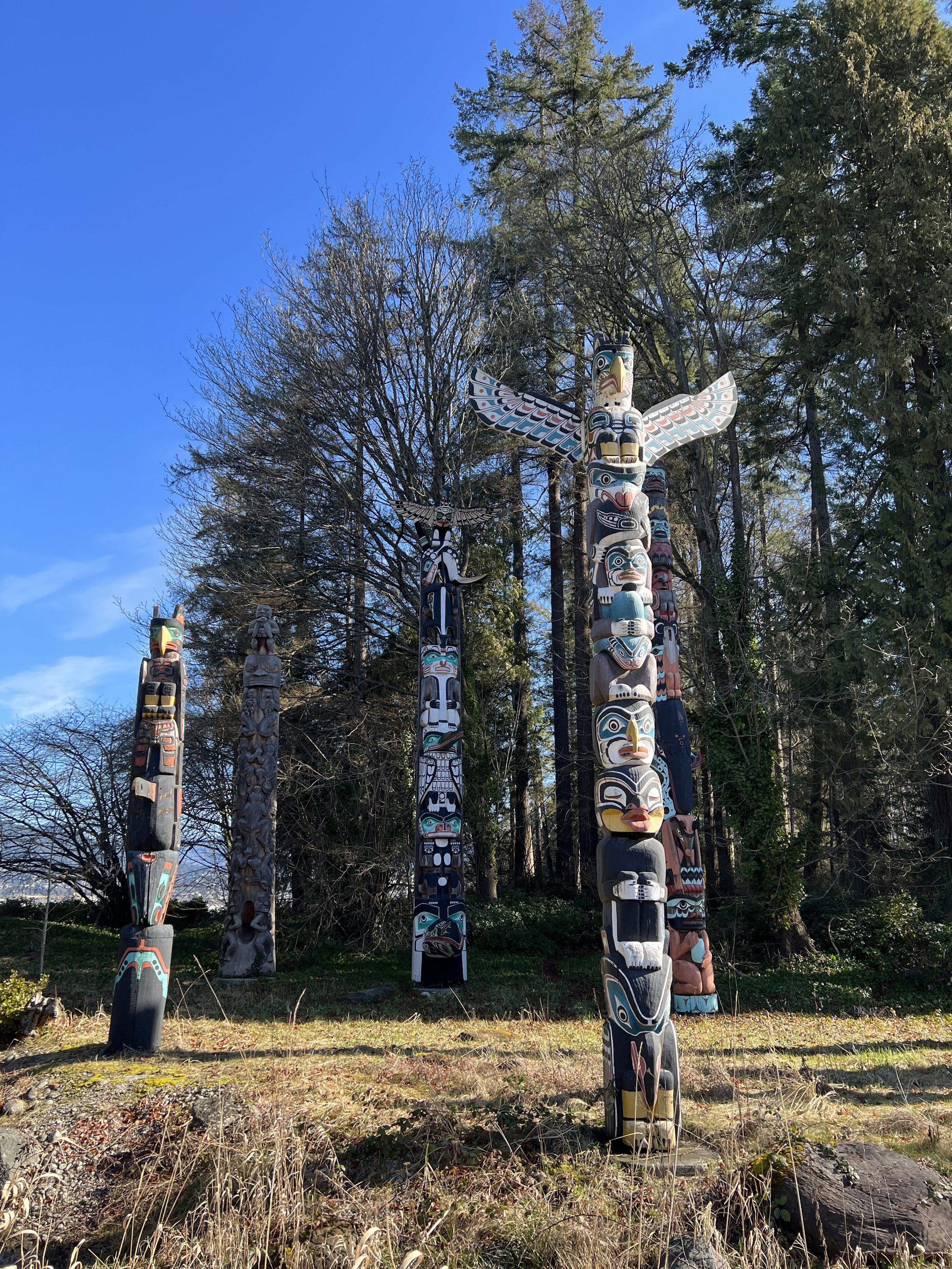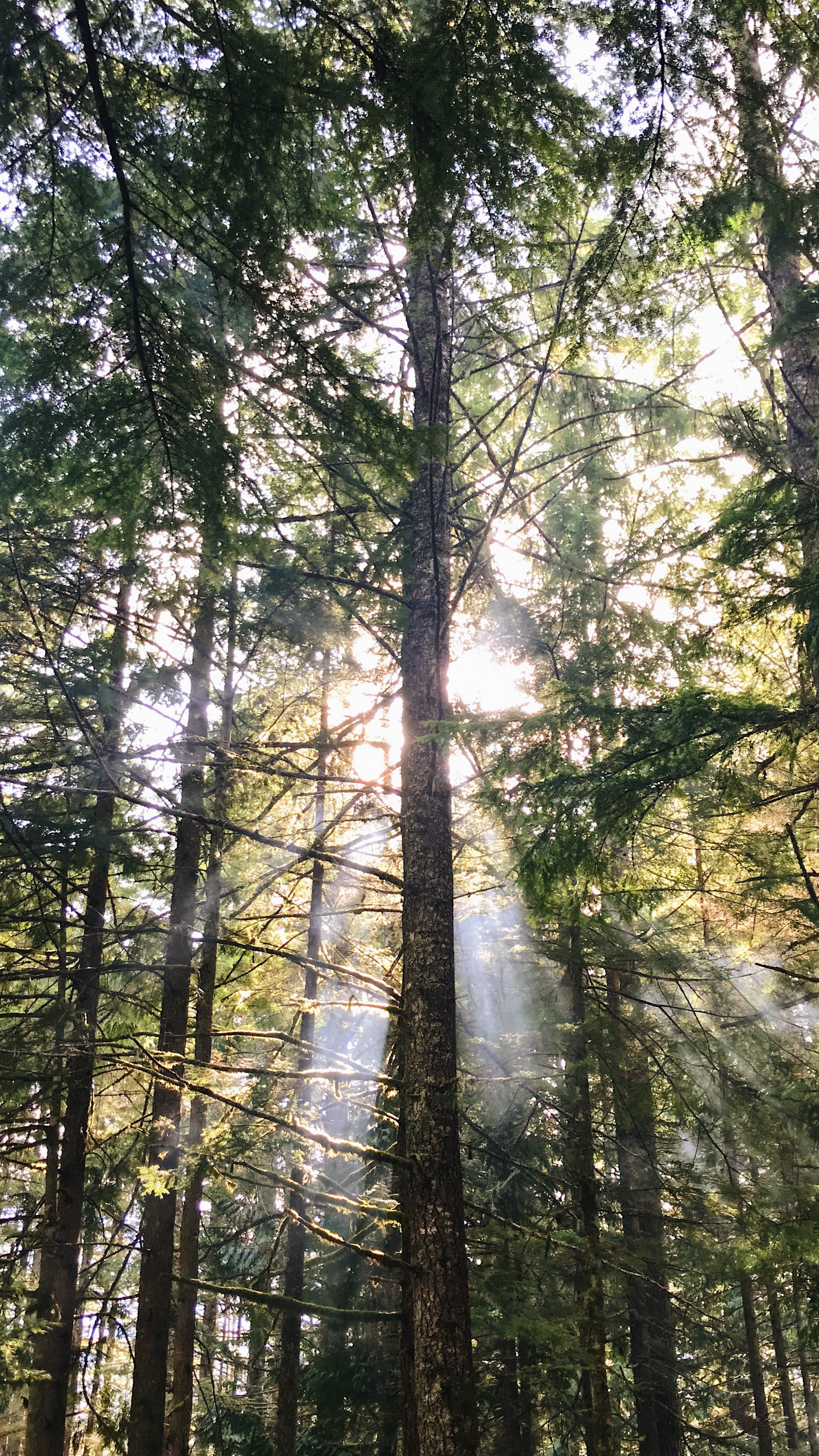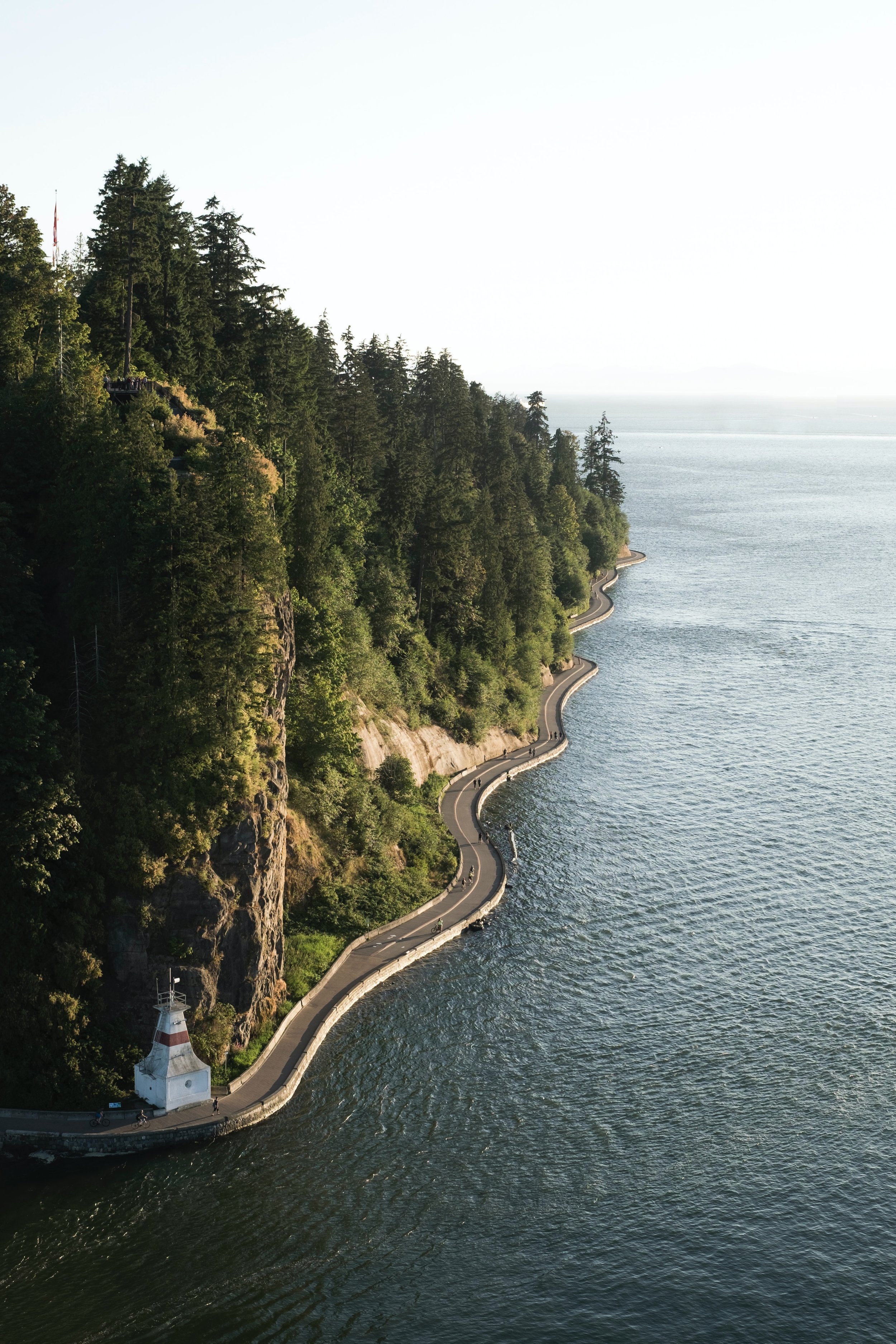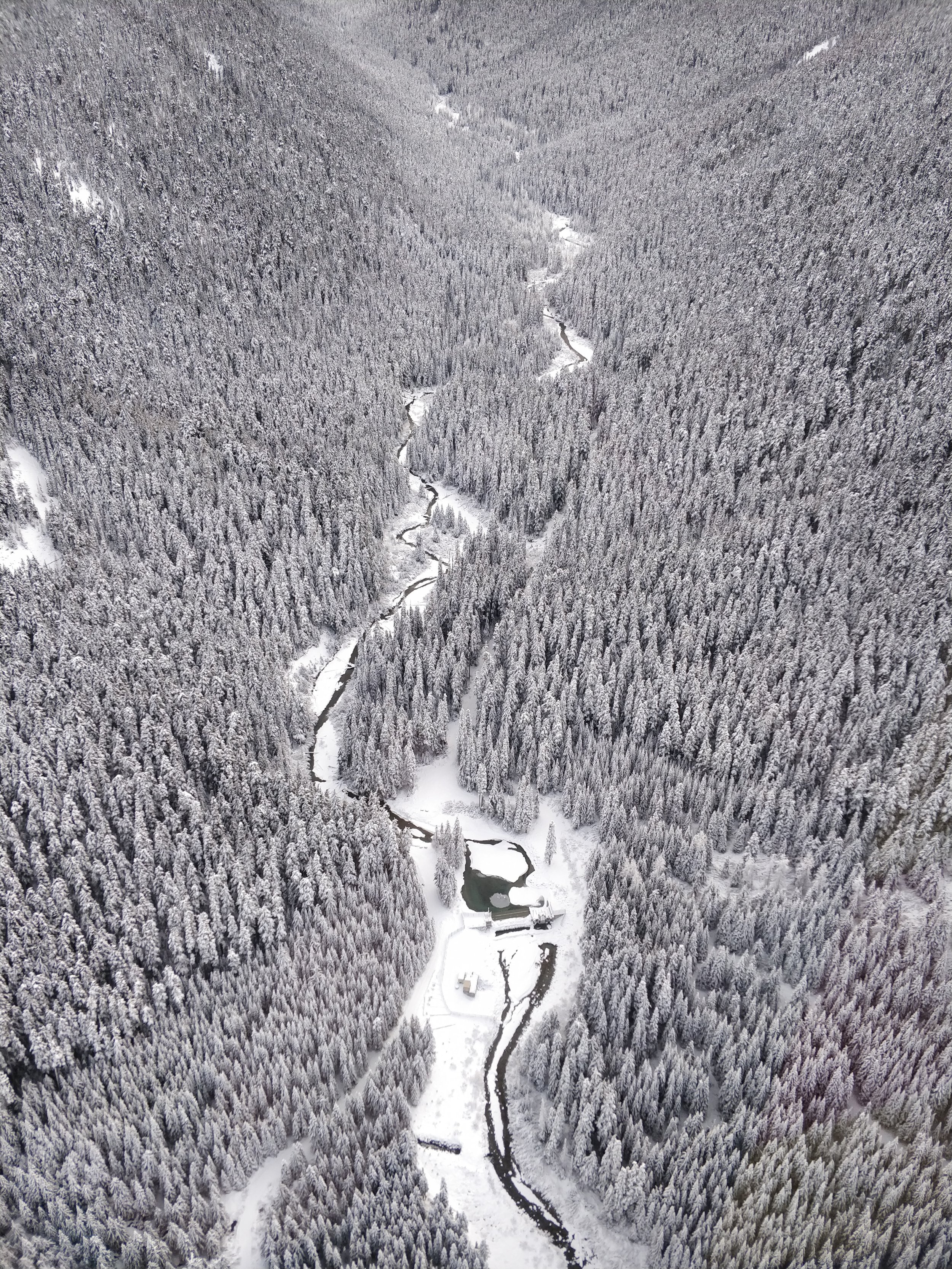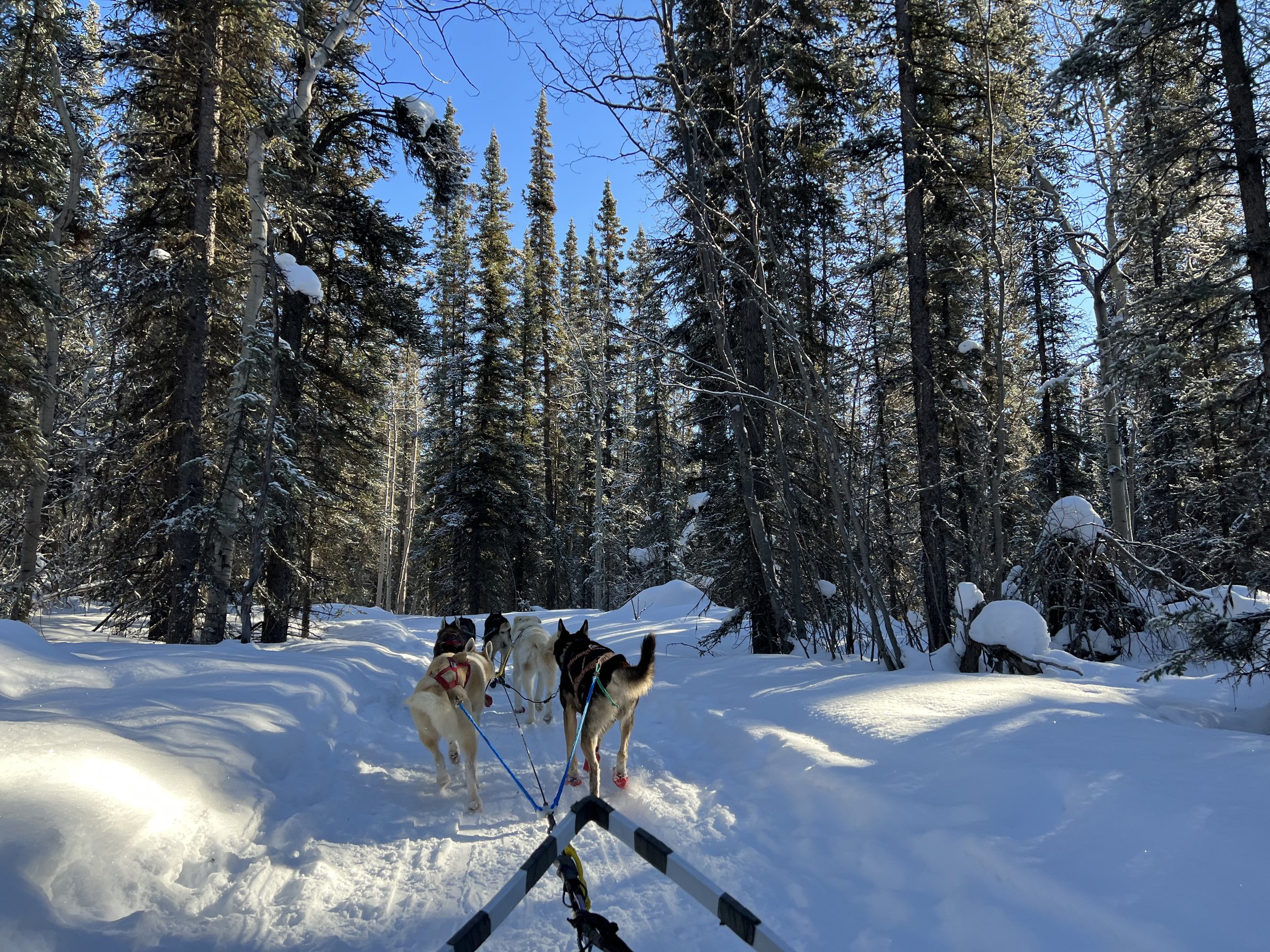My Mind Needs the Outdoors
For as long as I can remember I’ve loved the great outdoors and being outside. One of my earliest and fondest memories is hiking up a mountain in the French Alps with my dad. The hike took a lot longer than we anticipated and we didn’t get back until after dark, with the rest of my family getting increasingly worried about when we would return. We had a fantastic time, and didn’t stop until we’d achieved our goal of hiking to the top and back, despite the darkening skies. The sense of adventure and wonder at the natural world I felt that day has never really left me, at times perhaps more dormant than others, but it’s always been there bubbling beneath the surface.
Over the past couple of years I’ve really appreciated how much being outdoors means to me and my wellbeing. Throughout the pandemic the bit of my day I looked forward to the most was getting outside and going for walks in the countryside around me. It refreshed my mind, calmed me down and allowed me to appreciate the bigger picture. Noticing this importance has been a bit of a lightbulb moment. I’ve realised where my true passions in life lie and decided to act upon them. Moving to Canada for 6 months with access to towering mountains, fast flowing rivers, and epic lakes was part of me realising this dream, although I truly believe you can immerse yourself in nature anywhere in the world.
Since noticing how my own mental health improved through spending time in nature, I became interested to know more. After digging a bit deeper, I’ve learnt that we benefit hugely from being outdoors, and that we can increase this positive reaction by fully immersing ourselves. The topic - called Ecopsychology, is a huge and emerging subject, but one that has very real benefits to people’s mental wellbeing. Numerous pieces of research have shown that spending time in nature helps mild to moderate depression and can be an antidote to stress. It can reduce anxiety, improve your mood and genuinely lower blood pressure. In Canada, with this research in mind, doctors have started to prescribe free National Parks passes to people suffering with depression, and reported hugely positive effects. The programme, called PaRx, is Canada’s first national nature prescription programme, and people who have been prescribed 2 hours a week for at least 20 minutes a time have reported a lifted mood, calmness and reduced symptoms of depression.
This initiative is backed by several new research papers and books. I recently read Losing Eden: Why Our Minds Need the Wild, by British journalist Lucy Jones. She focuses on how and why connecting with the natural world can affect our health and wellbeing, as well as how appreciating the power and beauty of nature can inspire action to save the planet from eco-destruction. Throughout the book her arguments are backed up by numerous research articles & papers, ranging from a 2015 experiment showing how microbreaks in green spaces (moments as small as looking at a green roof in a city) improve our cognitive functioning, to a study in which the participants were more generous to complete strangers after looking at awe-inspiring natural scenery. MRI scans in this second study showed reduced activity in the part of their brains responsible for their ‘sense of self’. Reflecting on the benefits exposure to nature has, she also touches on how children (particularly in cities) have severely reduced access to the outdoors, with ¾ of children aged 5-12 spending less time outdoors than prison inmates. She touches on how society is reacting to these problems, with ‘forest schooling’ (where children are encouraged to explore whilst being taught outside) being expanded upon in the British education system. She visits such a school in East London called Tower Hamlets Cemetery park and speaks to Kenneth Greenway (the cemetery park manager) about the initiatives. The school offers a wide range of experiences, which can include cooking on fires, building dens, bushcraft skills, bird watching and identifying insects to name but a few. To further immerse the children in the park, they can take part in tailored activities and games designed to help them connect to the natural environment on a deeper level. It’s a wonderful concept, and considering the park’s urban location, seems a great way to give kids in a built up environment immediate access to the outdoors.
Over the last 6 months whilst travelling in Canada I’ve visited some truly beautiful places which have energised me, and clearly exhibited the outcomes of the studies Lucy Jones focuses on in Losing Eden. I really notice the difference in my life outlook and motivation when I spend time outside, whether that be hiking, surfing, skiing, climbing, or just taking a simple stroll. With this knowledge in mind, I always try to get out for a walk or hike everyday, and whilst walking, use different techniques to feel present and notice things - how the ground feels on my feet whilst walking, the spectrum of different colours in the sky or trees, and my breath or heartbeat. These practices ground me, and stop distractions and thoughts, if only for a few minutes, allowing me to fully experience the place I’m in, and forget the stresses of the day. This connection to our natural environment and the practice of spending time in nature is a powerful thing, and something I believe everyone should try and implement into their daily lives. The benefits are very real and very important. Get outside people, and reap the rewards!
Urban Wilderness in Vancouver
View towards Stanley Park and Vancouver over the Lionsgate Bridge
After our stay in Whistler we travelled back down the beautiful Sea-to-Sky Highway to Vancouver. Although we’d passed through the seaport city twice already on our trip, we hadn’t had a chance to spend more than a few hours there yet. This time we planned to stay a few days and explore the city properly. Arriving at a real hotel after the Pod in Whistler was an absolute god-send. We were both getting very frustrated with sharing such a small space, particularly with my crutches in tow for the week. The final straw for us was a rude awakening at 3am on our last night, by several loud people plus a random dog!
Unbeknownst to us, the hotel we booked in Vancouver was operated by the YWCA (Young Women’s Christian Association). This organisation was formed in 1897 to provide housing and services to women arriving in Vancouver in search of education or employment. Their aim was (and still is) to ensure the safety and wellbeing of women new to the city. Although originally called the Young Women’s Christian association, the focus today is much broader, with the organisation providing support to all women, families and allies. They have a vision to achieve women’s equality through the delivery of affordable housing, early learning and child care, training and employment services, and a range of holistic programs that encourage safety, wellness and economic security. It was heartening to discover that our stay in the hotel helped to fund their community programs for women, children and families, whilst being a great base to explore Vancouver from, and a comfortable antithesis to our Whistler Pod!
Having given back my crutches in Whistler at the end of the week I was flying solo on my ankle with just a support brace to stop it from rolling again. Although still a bit sore, I could pretty much put weight on it now, and was able to walk around without the crutches. With my walking ability back in business, we went for a stroll and some Tacos in the Yaletown area, walking back afterwards along the twinkling waterfront. There was lots of life and activity down by the harbour, and we even saw a racoon running along the jetties, perhaps attempting to commandeer a boat…
The following morning we made our way over to the West End of the city to rent bikes, with a plan to cycle around the edge of Stanley Park. I didn’t want to over-stress my ankle so we rented electric bikes to minimise the physical cycling. Although they didn’t look like much (sort of like oversized Bromptons), the bikes were absolutely rapid, with minimal exertion required to get them up to speed.
We entered the South side of the park, with Vancouver Harbour on our right and Grouse Mountain on the horizon ahead. I was immediately struck by the size and beauty of the place. At 400-hectares the park is Vancouver’s largest and oldest, a place where you can enjoy scenic mountain views, vast expanses of water and majestic trees right in the midst of the urban city. We cycled further on, my senses becoming permeated by earthy air and the scent of pine. The noise of birds, wind moving softly through the boughs and the kaleidoscope of greens settled my soul as we moved silently and swiftly on our bikes through the old-growth temperate rainforest that makes up the majority of the park.
View towards the Lionsgate Bridge with Stanley Park on the right & Grouse Mountain in the distance
The history of this incredible urban oasis is rich and fascinating. The land was originally occupied by Indigenous peoples, with archeological findings showing a human presence in the park dating back more than 3,000 years. After British Columbia was colonised by the British during the 1858 Gold Rush, the Stanley Park peninsula was named as a government reserve and set aside for military purposes. In 1871, after British Columbia joined Confederation (union as part of Canada), the authority of military reserves in the province were transferred in due course to the Canadian government. Stanley Park was included in this transfer, and officially opened in 1888, named after Lord Stanley, a British politician who was appointed Governor General of Vancouver at the time.
The park is incredibly unique in that it is not the creation of a landscape designer or architect, but the natural evolution of a forest over hundreds of years. In general the space remains as densely forested as it was in the 1800s, with around half a million trees, consisting of Douglas fir, western red cedar, western hemlock, and Sitka spruce. This forest at its core gives the park a wilder and more natural character than most urban parks in the world, with its size meaning you can take a step away from the busy city and feel like you are somewhere else entirely. For a sense of the scale of Stanley Park’s 400 acres, Hyde Park in London is 142, and Central Park in New York is 340. It is essentially a space large enough to get lost in, but close enough to the centre of the city that you can spend a day walking its tranquil trails, and be back in downtown by the afternoon.
This proximity to wilderness is something that typifies Canada as a country, it’s a characteristic that it is most renowned for, and certainly one one of the main reasons I wanted to come. Vancouver itself, with it’s close connection to mountains, rivers and forests, where you can ski, kayak, hike and climb, is the ultimate ‘outdoor’ city, and Stanley Park mirrors that, feeling like a microcosm and metaphor for the wider country. The importance Canadians put upon enjoying the wild and natural spaces they have in abundance is immediately understandable, with Stanley Park standing as a real testament to this belief. The space enables the urban dwellers of Vancouver to escape from the city, immersing visitors in soft green foliage, earthy smells, and dappled sunlight to soothe away the stresses of urban life.
Can a Ski Resort be Sustainable?
View out from the Sea-to-Sky Highway
Following our time in the Yukon, we spent our second week in the world-famous ski resort of Whistler Blackcomb. The transfer from Vancouver airport took us along the Sea-to-Sky Highway, one of the most beautiful drives in the world according to our Lonely Planet guide. It certainly lived up to this expectation. The road was absolutely stunning. On your left as you’re driving you have the peaceful expanse of water that’s called Howe Sound, and on your right the pine trees and mountains that get gradually larger and more jaw dropping the further on you drive. The ribbon of tarmac took us through the adventure town of Squamish, and up into the Garibaldi ranges that make up the ski resort of Whistler Blackcomb.
We arrived at our accommodation and it’s safe to say we were a little surprised at the size and general feel of the place. I’m not quite sure where the definition between hostel and hotel is drawn - but our “hotel” in Whistler certainly toed the line carefully. We knew it would be small due to it being advertised as a Pod Hotel, but we were expecting a bit of space to put our things and change, as well as more privacy than a felt curtain. I practically spent the week sleeping inside my rucksack and banging my head every time I got into the bunk.
We came to Whistler as I love skiing. I’ve loved skiing since I was about 4 years old, and I’ve been extremely lucky to have skied in most of Europe, and America a couple of times, as well as doing a ski season in Val D’Isere in 2016. Because of this I was extremely excited to ski in Canada, I’d heard great things, and I couldn’t wait to get on the slopes and see what all the fuss was about.
On our first evening we went for a few drinks that turned into a bit of a raucous affair. After sampling the Gin and Tonics in 3 different bars we stumbled home ready to sleep after a long day. In my slightly inebriated state I decided to walk back to the hotel through a small wooded area that looked perfectly stable to my focused vision. Unfortunately I didn’t notice the vast web of icy roots that lay underfoot and went straight over on my ankle, rolling the joint and tearing my ligaments.
The following day was agony. I couldn’t put any weight on my right foot and was in pain every time I tried to move it. After struggling to put my trousers on in the 2 feet of room we had in our pod I decided to go to the Pharmacy and get it checked out. It turned out you could rent crutches for $10 a week, so seeing as I couldn’t physically walk, I thought it would be wise to rent a set. As I’m sure you can guess, skiing on a sprained ankle isn’t really recommended, nor was it an option at all as I couldn’t even stand on my right leg without crumbling.
The following day, after Luce went skiing and I had spent about an hour attempting to descend from our bunk in the Pod Hotel in one piece, I settled down with a coffee and considered a week in the renowned ski resort without being able to ski.
Staring out enviously at the crowds of people on the ski lifts and whizzing down the slopes got me thinking about the place I was in, how much I loved being in the mountains, and the urgent need to protect the natural environment from climate change for our future generations. I wondered to myself, can a ski resort be sustainable? Is skiing and snowboarding in itself a sustainable activity?
It turns out that it can be. Many ski resorts in the world are implementing incredible and innovative measures in order to protect the mountains, snow and snowsports for the future.
Of resorts I’ve actually visited in person, one in particular has always stood out to me as clean and sustainable. The Swiss town of Zermatt and its resort; the Matterhorn Paradise. Going back as far as 2002, environmental and planning agencies based in Zermatt have set working groups focused on achieving sustainability within the resort. The original concept was titled “Zermatt, A Sustainable Ski Resort”, with the aim of making the town and resort as sustainable as possible. To achieve this tall order over the years several measures have been introduced, including the implementation of photovoltaic (solar) panels to power new cable cars and restaurants, the use of solely electric vehicles around the town, and the utilisation of renewable electricity through hydro-power projects.
Zermatt & an electric resort taxi
The most noticeable initiative in person is the car-free nature of the resort. Originally this was because the road conditions up to the town were too poor for cars to get up there, and in the 1980s electric vehicles were introduced to transport tourists around. To this day there is no possibility to get to the resort by car. Nor is it possible to drive once you’re there. Visitors are driven around by a fleet of electric taxis, resulting in noticeably clean, fresh air with little contamination. This leads to better snow conditions, and longer lasting seasons. Transportation to the resort also plays a part, with train travel being strongly encouraged in place of car use. This low carbon way of getting to Zermatt is efficient and easy in Switzerland, and the environmental impact of travelling is reduced even further as Swiss Railways generate 90% of the electricity needed from renewable hydropower.
Since the initial objective set in 2002, solar power has also featured in Zermatt’s plans to become more sustainable. The resort has a number of photovoltaic systems, with the Matterhorn Glacier Paradise 3S lift base station accommodating 485 panels. The panels cover a surface area of 877m2 and are capable of generating 157,000 kWh of energy per annum. This amount of energy will supply 35 households and save 23.4 tonnes of Co2 every year. In addition to this system, the top station restaurant at Klein Matterhorn produces 35,000 kWh per annum from 108 panels. These panels, integrated into the building's facade, cover all the heating, ventilation and lighting requirements for the restaurant across the year.
Across the pond, huge leaps are being made in the New Mexican ski resort of Taos Ski Valley. At the time of writing it is the only ski resort in the world to hold B Corp status. This means its operations have met the high and rigorous environmental and social standards created by the non-profit B Lab. The newest hotel in Taos Ski Valley; The Blake, achieved LEED (Leadership in Energy and Environmental Design) Certification, a green building program used worldwide that recognises the hotels’ sustainable components, from energy efficiency throughout the building, to applying a comprehensive recycling and reuse platform throughout.
Taos Ski Valley - © Murray Foubister / Flickr / CC-BY-SA-2.0
The motto of Taos is “Ski the Change”, which it lives up to through initiatives such as using waste oil from the snow cats, snowmobiles, and trucks to heat its vehicle maintenance building, installing a food waste dehydrator to convert waste into soil amendment, and donating used wine bottles to the Taos Earthship Institute to be made into energy efficient houses. One of the major initiatives is their Net Zero (carbon neutral) energy planning effort for 2030. They’re reaching towards this through the use of solar power, of which their local electric supplier will be 100% daytime solar this year, the electrification of systems and vehicles, and the removal of single-use plastics in their food outlets amongst a number of movements.
In Whistler Blackcomb the resort is extremely committed to environmental protection through climate advocacy, carpooling initiatives, waste management, and hydroelectric conservation projects to name but a few. On the advocacy side, they run a number of programs aimed at engaging visitors and staff. This includes wildlife tours in which people are educated about regional wildlife and their habitat, a regular educational speaker series, and a staff-led coalition called the Workplace Conservation Awareness committee that creates educational campaigns throughout the year. Since 2000, Whistler has reduced waste by more than 70%. They use a system based on the 4 R’s (reduce, reuse, recycle and repurpose), with a strong emphasis on recycling. In 2009, retrofits were made to major food and beverage outlets to improve sorting efficiency and the addition of a compostable stream. Although this has been successful in reducing the amount of waste Whistler produces, the resort recognises that there is still more that can be done to maximise the efficiency of recycling and waste management.
This is great progress and a strong step in the right direction, but the real jewel in Whistler’s crown is based on renewable energy. In 2011, a micro hydro renewable plant, situated in the middle of Whistler Blackcomb, under the Peak to Peak Gondola, started to generate power. The Fitzsimmons Creek Project harnesses energy by diverting water flows through an intake structure to a highly dense sluice, then to the generating equipment located in the powerhouse. The project, built with a partnership between BC Hydro and Innergex generates 33.5 gigawatt hours and returns to the grid the equivalent of Whistler Blackcomb’s annual demand. This is an unbelievable amount of energy, all of Whistler’s energy for the year created through the use of hydropower! An incredible example of the immense power we can gain from renewable energy sources.
The Fitzsimmons Creek Hydroelectric Project - © Ruth Hartnup / Flickr / CC-BY-SA-2.0
In recent years, sustainability, and all the initiatives that go with it, have gained huge and (in my opinion) necessary swathes of popularity and support. The outdoor community in particular have recognised the urgent need to protect natural spaces and the environment from climate change due to the time they spend immersed in these places. Even so, the majority of people today care about the carbon footprint they’re leaving, where their energy comes from, and how natural environments are affected by human activity. This behaviour is reflected throughout society and I’m glad to see it being recognised and acted upon by ski resorts across the world. The initiatives and movements I’ve read about have inspired and encouraged me, and although not completely perfect yet, have answered my question with a resounding yes. With a bit more work, and environmental consideration when visiting, living and getting to ski resorts, the act of skiing can become a sustainable activity.
The Currency is Connection
Swindon to the Yukon
The day finally came! On Tuesday the 15th February my partner Lucy and I left my family home just outside of Swindon, and got on a flight to Vancouver, Canada! Leaving for 6 months on an ETA (tourist visa), we’re planning to travel around the country, experiencing Canadian culture, spending time in the great outdoors, and learning about local communities. I’m planning to take inspiration for my design work from the outdoors, and reaffirm my purpose to work with brands and people that love protecting and championing the natural environment around us.
Our travels in our first week took us from London Gatwick to Vancouver via a connecting Calgary flight, and then onto Whitehorse in the Yukon. We were really excited to visit the Yukon, after being recommended it a few years ago by a friend. Throughout Vancouver airport there are a lot of brightly coloured billboards and posters advertising the Yukon - they really evoke adventure and beauty through the use of illustration and brand messaging. There was an interesting article in the in-flight magazine which talked about the importance of brand messaging for places. The Yukon has become a brand in of itself in recent years, with companies regularly using the name in front of their products or services to demonstrate durability, quality and endurance. The article focused on the creation of ‘the Yukon Story’ - capitalising on the uniqueness of the Yukon through the use of “Place Branding”; storytelling with a sales pitch. When explained fully, Place Branding is described as using story and narrative to move into a space where people express qualities, feelings and aspirations that are unique to the place being depicted. To create the Yukon Story, a company from Vancouver - Story Engine, interviewed more than 80 Yukoners about the qualities and feelings that define the territory. From there they completed a “character study” of the Yukon - bringing in First Nations, self government, adventure, opportunity and the outdoors, making statements like “Our currency in the Yukon is connection… We make mistakes and then vow to fix them, together.” The hope is that from creating a story for the area it will resonate with people who are looking for what the territory has to offer, and encourage them to stay.
During our stay in Whitehorse (the capital of the Yukon) the phrase mentioned in the story “Our currency in the Yukon is connection” really resonated with me. I noticed how interconnected the community was here. From bakeries and breweries supplying local restaurants to people working multiple jobs in different sectors it was cool to see how much support people have for each other. This was evident when we went to watch the start of the Yukon Quest, a 1000 mile international dog race. Due to the pandemic the race was a bit shorter this year, but still a huge part of the local culture. Race teams here are made up of people from all over the world, and there is a strong relationship between the mushers, dogs, and their support team. A few days later we spent a day at Alayuk to try dog sledding ourselves. The musher driving my sled explained that he worked part time at Alayuk and was also part of Michelle Phillips race team (she came second in this years Yukon Quest). It seems like it’s an incredibly important part of the culture here to support and take part in the race if you’re in the dog sledding industry.
This interconnected-ness is also reflected in how much people value the environment and resources around them - from using every part of an animal that’s been hunted to ensure no waste, to a repair-cafe being set up in the town to fix seemingly unrepairable items such as electronics. Seeing this community supporting and helping each other was inspiring, and all of these movements help the planet, the community and ensure the sustainable use of produce and materials.
Whilst in Whitehorse we hiked the Millenium Trail, a short route following the banks of the Yukon River, and visited the Yukon Wildlife Preserve - about 40 minutes North of the City. Whilst walking we saw an abundance of wildlife, from a red fox to 2 majestic bald eagles high in the trees. The Wildlife Preserve was something special. As soon as you leave Whitehorse the road gives way to complete wilderness, with a vast expanse of forests and mountains all covered in bright white snow. Moose outnumber people pretty much 2 to 1 in the Yukon, with an estimated 70,000 roaming across the territory. It was amazing to see some up close in the preserve alongside bison, mountain goats, caribou, and even an elusive lynx. It’s incredible to see these animals in their habitats, thriving in conditions that would seem unlivable in the UK.
Following our time in Whitehorse we travelled south to The Inn on the Lake, a beautiful property overlooking Marsh Lake and the mountains beyond. The Inn had an atmosphere that really made us feel at home, with the staff emanating good vibes, and the wooden cabin feeling very cosy and warm. We were lucky enough to see the Aurora Borealis on our first night, the sky erupting in a spectacular show of light greens and purples. We walked out onto the dark frozen lake and watched as they moved and rushed past overhead. The glowing, dancing spectacle is caused by collisions between electrically charged particles from the sun that collide with the earth’s atmosphere - although I think I prefer the spiritual theory; that they are a message from ancestors who have passed on. They dance in the spirit world to let us know they are happy there.











